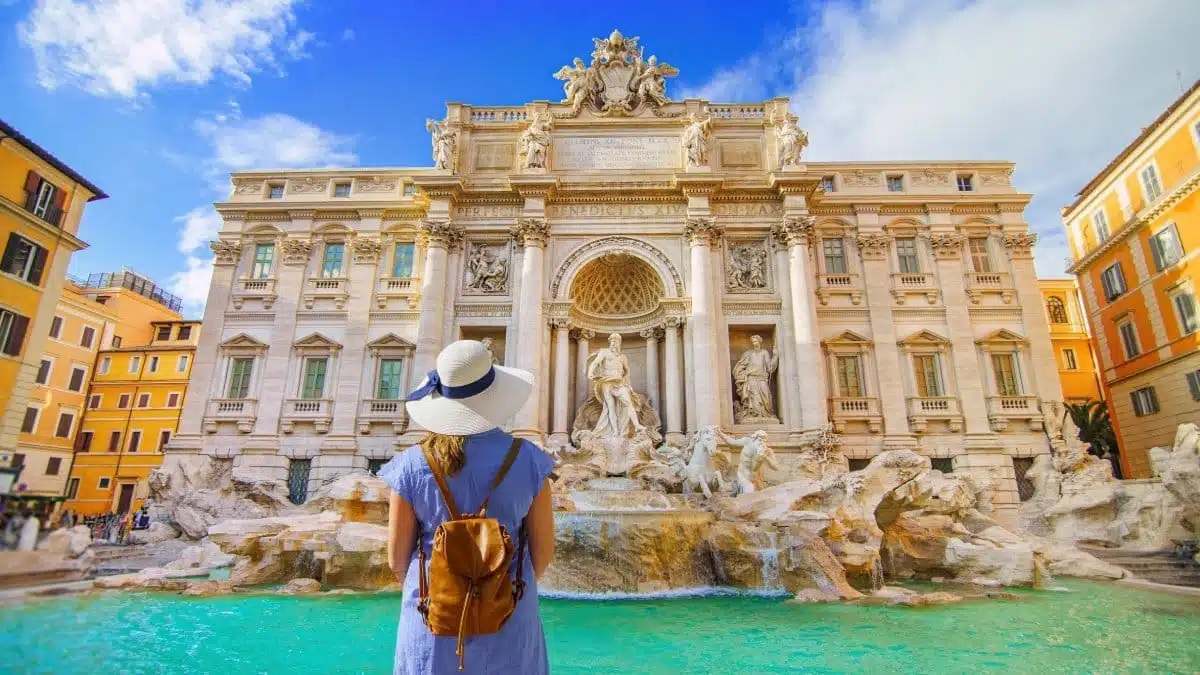Italy, a country synonymous with the Renaissance, offers an art lover’s paradise far beyond the well-trodden path of its 15th and 16th-century artistic highpoint. This guide ventures into the heart of Italy’s diverse art scene, exploring destinations that showcase the country’s rich history, culture, and artistic innovation from ancient times to the contemporary era. Each destination is a testament to Italy’s enduring influence on the art world, inviting enthusiasts to explore its lesser-known treasures.
1. The Etruscan Art of Tarquinia
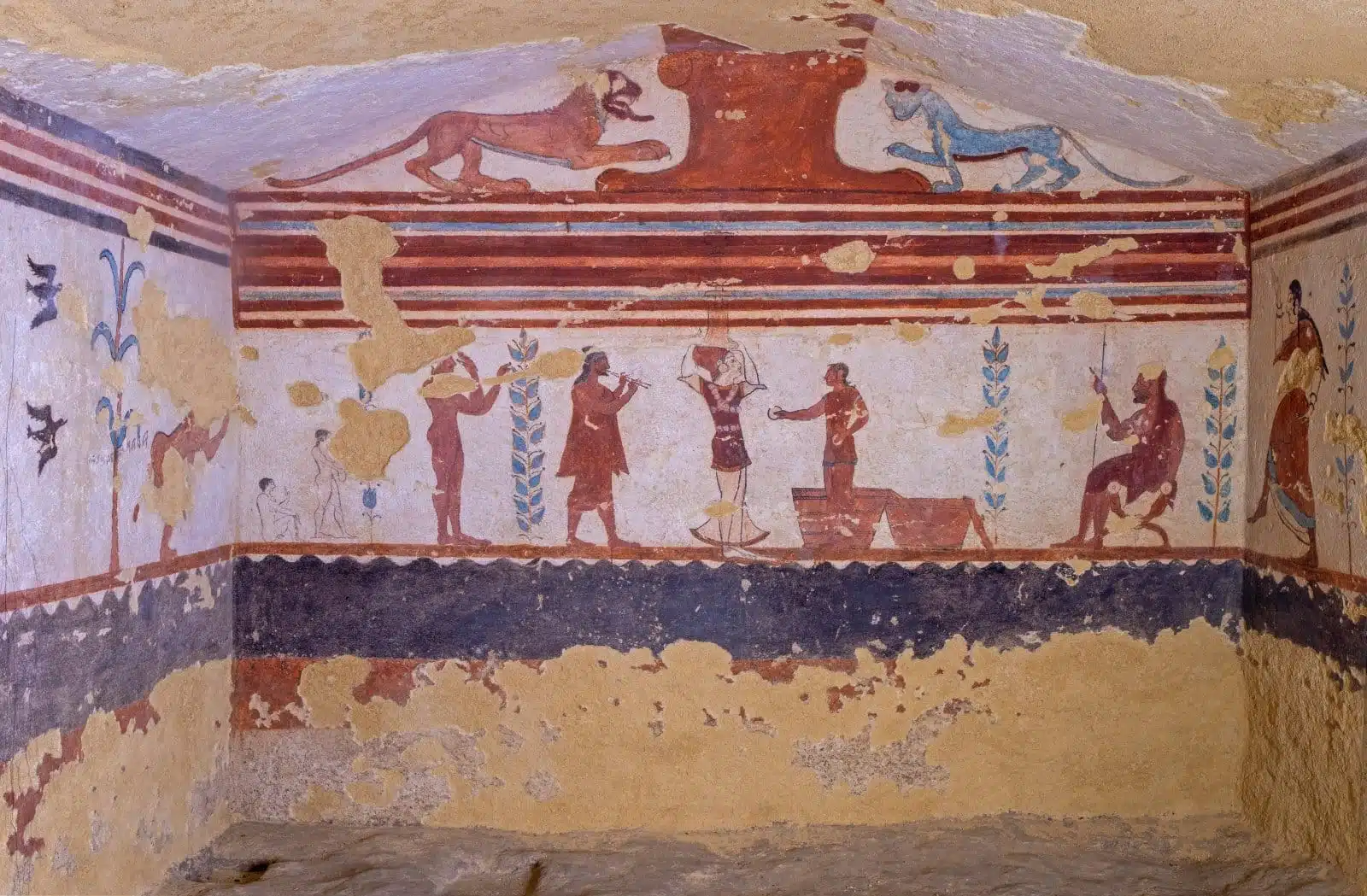
Image Credit: Shutterstock / David Pineda Svenske
Tarquinia, located in the Lazio region, showcases the artistic prowess of the Etruscans, a civilization predating Rome that flourished in Italy from the 8th to the 3rd century BCE. The UNESCO-listed necropolises here are home to some of the ancient world’s most exquisite and well-preserved frescoes, offering a glimpse into Etruscan daily life, beliefs, and artistic achievements. The Tomb of the Leopards and the Tomb of the Hunting and Fishing are standout examples, their vibrant scenes depicting banquets, dances, and nature with a liveliness that belies their age.
Insider’s Tip
Visit the National Museum of Tarquinia to see a comprehensive collection of Etruscan artifacts, including sarcophagi, pottery, and jewelry, which provide context to the necropolis frescoes.
When to Travel
Spring (April to June) and fall (September to October) offer mild weather, making it ideal for exploring the outdoor sites.
How to Get There
Tarquinia is accessible by train from Rome, with the journey taking approximately 1.5 hours. From the train station, the necropolis can be reached by local bus or taxi.
2. The Byzantine Mosaics of Ravenna
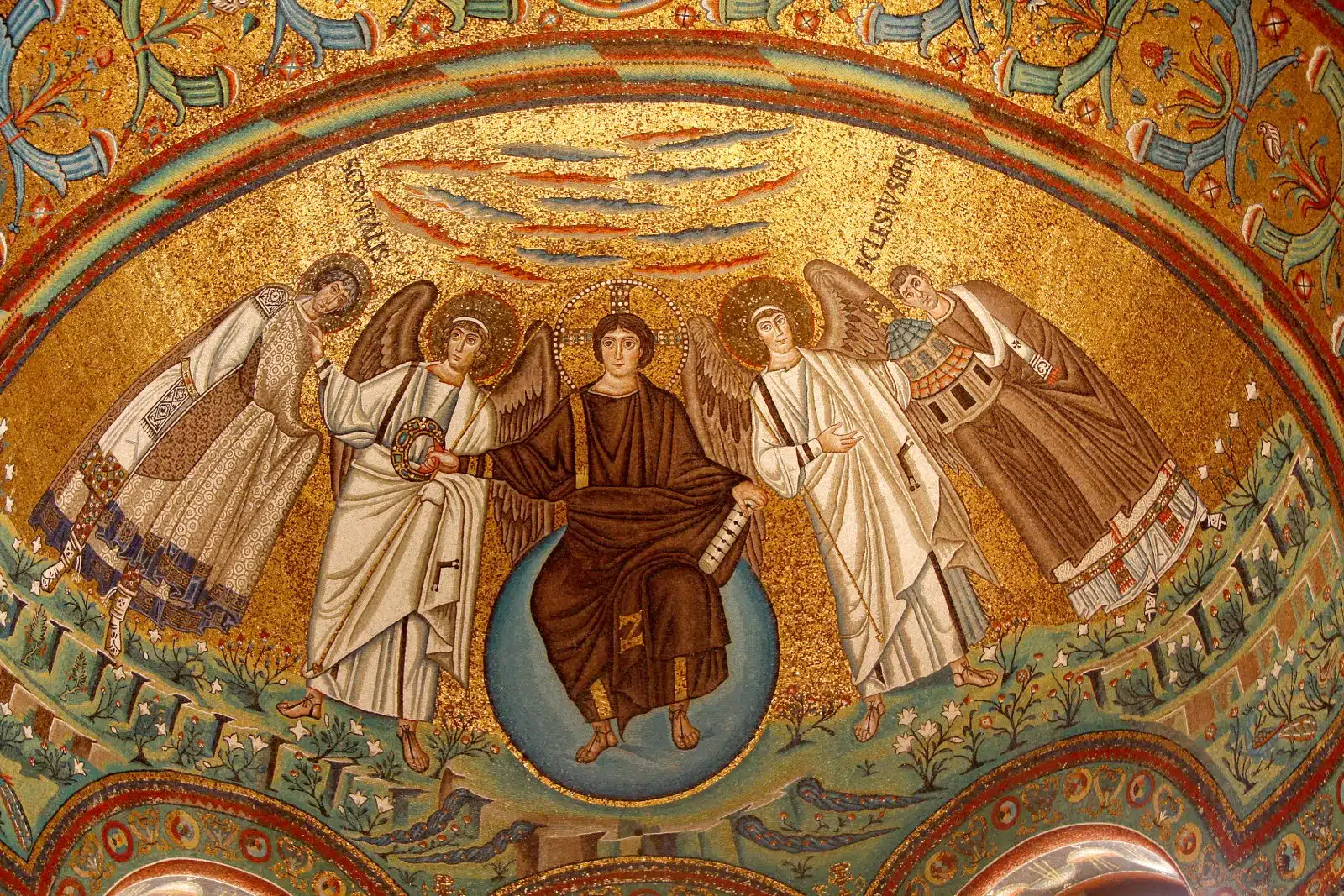
Image Credit: Shutterstock / Tomas Marek
On Italy’s Adriatic coast, Ravenna, is renowned for its stunning Byzantine mosaics, considered among the highest European achievements of this art form. Dating back to the 5th and 6th centuries, these mosaics adorn the walls of the city’s eight UNESCO World Heritage sites, including the Basilica of San Vitale and the Mausoleum of Galla Placidia. The mosaics are celebrated for their dazzling colors, intricate designs, and the way they reflect light, creating a heavenly atmosphere within these ancient buildings.
Insider’s Tip
For a truly immersive experience, visit these sites early in the morning or late in the afternoon when the play of light brings the mosaics to life in a breathtaking display.
When to Travel
The best times to visit Ravenna are during the spring and fall months, when the weather is pleasant and the tourist crowds are thinner.
How to Get There
Ravenna can be reached by train from major Italian cities such as Bologna, with the journey taking around an hour.
3. The Romanesque Cathedrals of Pisa

Image Credit: Shutterstock / federico neri
Pisa is also home to some of Europe’s most impressive Romanesque buildings. The Pisa Cathedral and the Baptistery, situated in the Piazza dei Miracoli, are masterpieces of medieval architecture, showcasing the transition from the Romanesque to the Gothic style. The cathedral’s exterior is adorned with intricate marble work, while the interior houses significant artworks, including a pulpit by Giovanni Pisano. The baptistery is renowned for its remarkable acoustics and the baptismal font, which has witnessed the christening of many notable historical figures.
Insider’s Tip
Attend a vocal performance in the Baptistery to experience its extraordinary acoustics firsthand.
When to Travel
Late spring and early fall are ideal, offering comfortable temperatures and avoiding the peak tourist season.
How to Get There
Pisa is well-connected by train to Florence, Rome, and other Italian cities. The Piazza dei Miracoli is a short walk from the Pisa Centrale train station.
4. The Baroque Splendor of Lecce
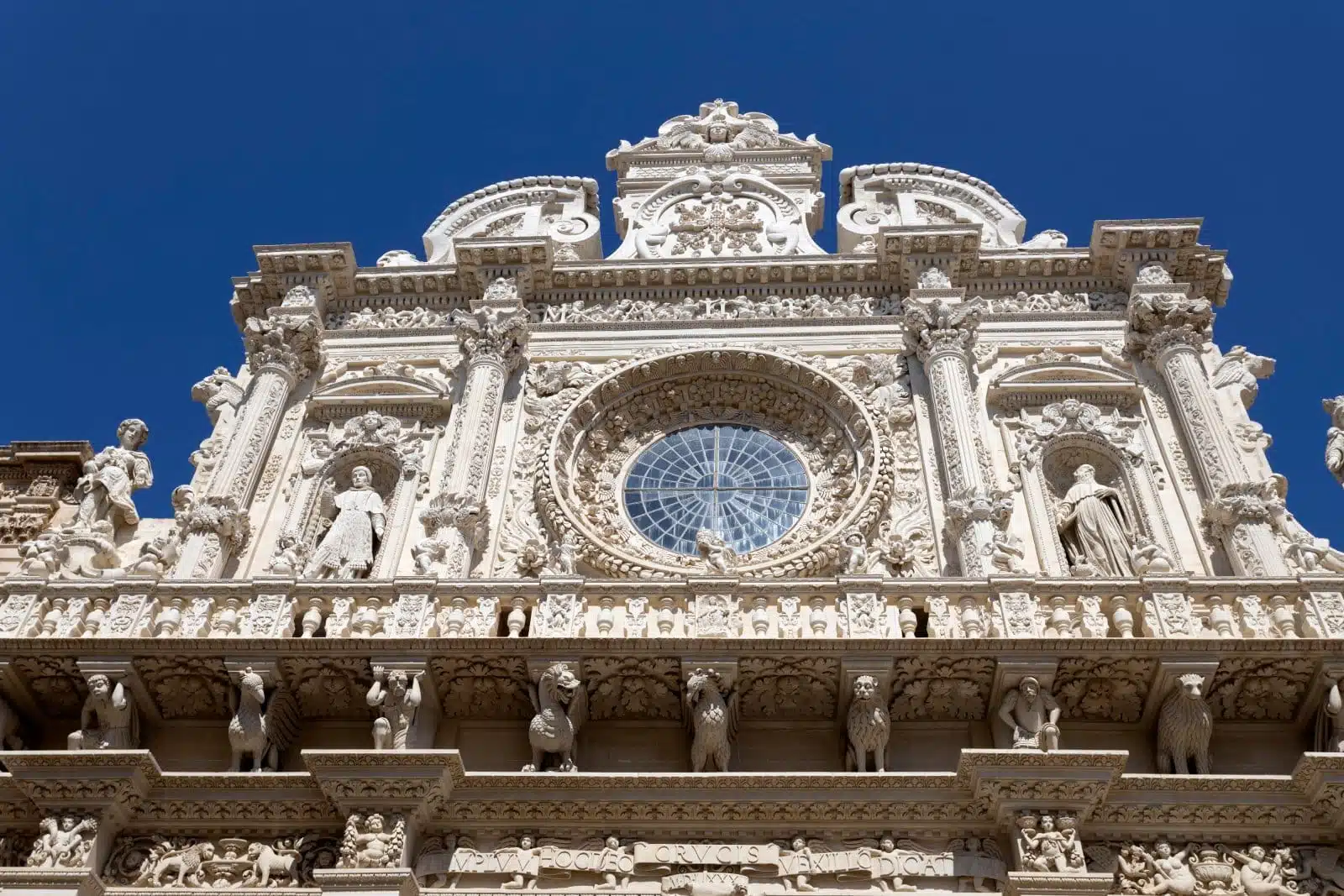
Image Credit: Shutterstock / faber1893
Often referred to as the “Florence of the South,” Lecce is a jewel in the crown of Puglia, distinguished by its Baroque architecture crafted from the local Lecce stone. This material lends the buildings a warm, golden hue. The city’s churches and palaces, such as the Basilica di Santa Croce and the Piazza del Duomo, are adorned with elaborate facades featuring intricate carvings that depict scenes from mythology, the bible, and daily life in the 17th century. This ornate style, unique to Lecce, reflects the city’s prosperity during the Baroque period and its artists’ mastery of stone carving.
Insider’s Tip
Explore Lecce’s historic center on foot to appreciate the detailed craftsmanship of its buildings up close. Don’t miss the chance to visit a local workshop to see artisans working with Lecce stone.
When to Travel
The best time to visit Lecce is during the spring (April to June) or early fall (September to October) when the weather is pleasant, and the city is less crowded.
How to Get There
Lecce is accessible by train from major Italian cities, including Rome and Bologna. The journey from Rome takes about 5.5 hours.
5. The Futurist City of Milan
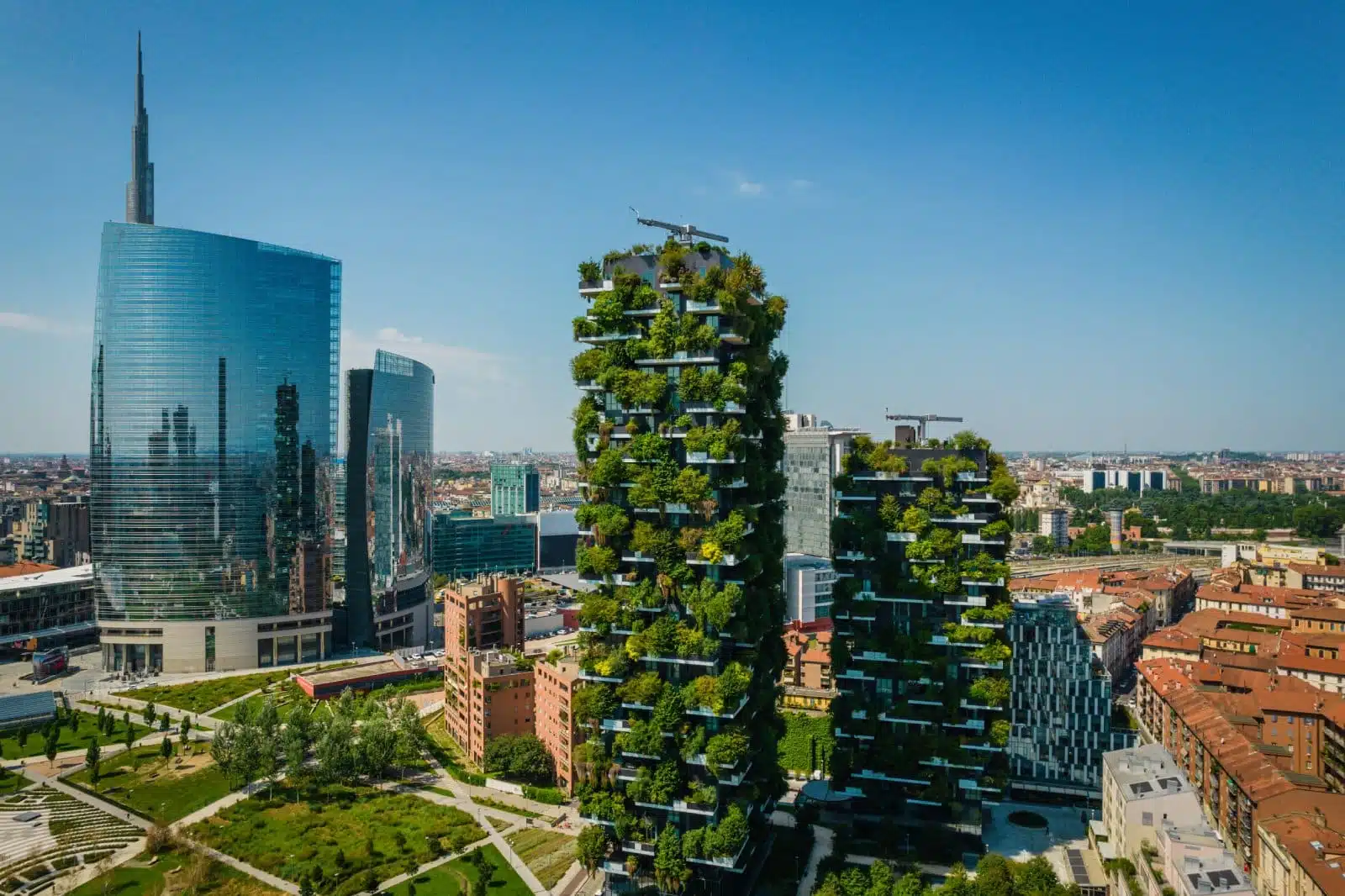
Image Credit: Shutterstock / Audrius Venclova
Milan, Italy’s fashion and design capital, also plays a crucial role in the history of the Futurist movement, an early 20th-century avant-garde movement that emphasized speed, technology, and youth. The city’s museums and galleries, such as the Museo del Novecento, house significant collections of Futurist art, showcasing works by artists like Umberto Boccioni, Giacomo Balla, and Carlo Carrà. These works capture the dynamism and energy of the modern world, reflecting the movement’s enthusiasm for the future.
Insider’s Tip
For a deeper understanding of the Futurist movement, consider a guided tour of the Museo del Novecento, which offers insights into the context and significance of the artworks on display.
When to Travel
Spring and fall are the best seasons to visit Milan, offering mild weather and several art and design events.
How to Get There
Milan is a major international hub, accessible by plane, train, and car from various locations across Europe and beyond.
6. The Contemporary Art Scene of Venice
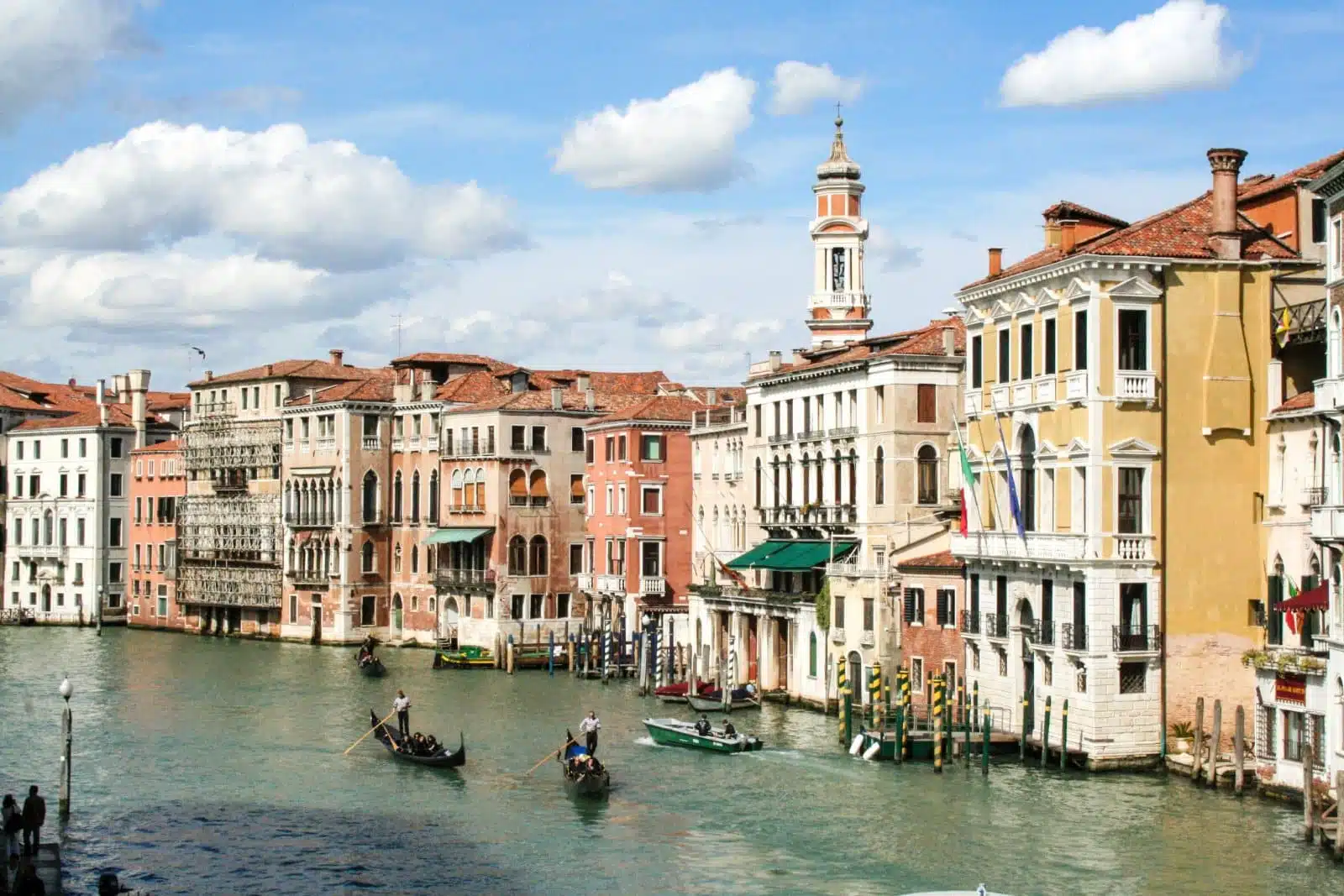
Image Credit: Shutterstock / auralaura
Venice is all about historic canals, Renaissance art, and a vibrant contemporary art scene, anchored by the Venice Biennale, one of the most prestigious cultural events in the world. The city’s galleries and museums, such as the Punta della Dogana and the Palazzo Grassi, showcase cutting-edge art from around the globe. The Biennale, held biennially, transforms the city into a sprawling exhibition space, featuring works by emerging and established artists in venues ranging from historic palazzos to modern galleries.
Insider’s Tip
Plan your visit to coincide with the Venice Biennale to experience the city at its most dynamic, with art installations and events taking place throughout Venice.
When to Travel
The Biennale typically runs from May to November, making this period an ideal time to experience Venice’s contemporary art scene.
How to Get There
Venice is accessible by train from major Italian cities, including Milan and Rome. The city’s unique structure means that travel within Venice is primarily by foot or boat upon arrival.
7. The Medieval Frescoes of Assisi
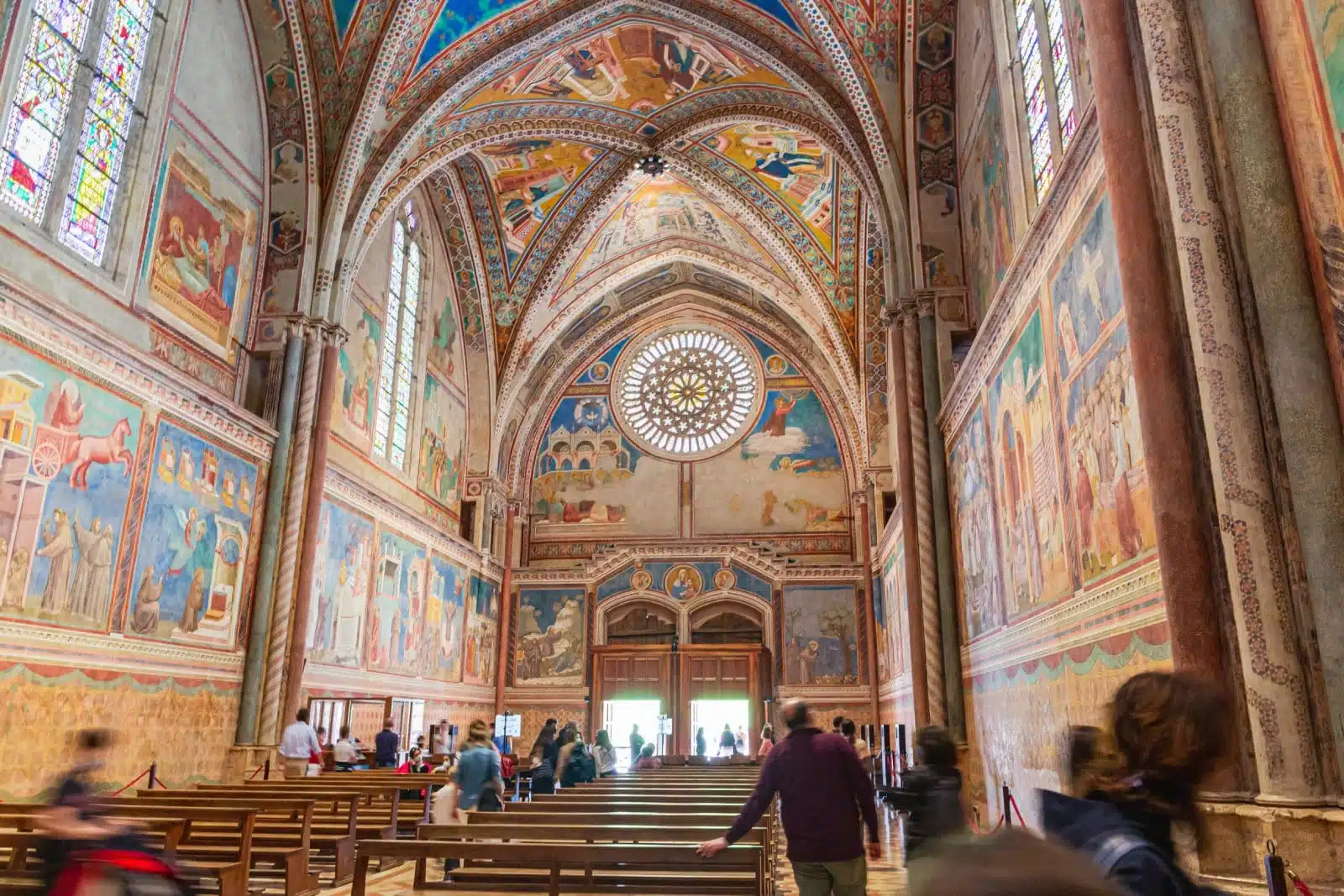
Image Credit: Shutterstock / Giulio Benzin
Assisi, a small town in Umbria, is famed for its well-preserved medieval architecture and the stunning frescoes that adorn the Basilica of San Francesco. These frescoes, attributed to artists such as Giotto and Cimabue, depict scenes from the life of Saint Francis and are considered masterpieces of early Italian art. The Basilica itself is a UNESCO World Heritage site and a pilgrimage destination, reflecting the profound impact of Saint Francis on Christianity and art.
Insider’s Tip
Take a guided tour to fully appreciate the historical and spiritual context of the frescoes and the Basilica’s architecture.
When to Travel
Spring and early fall offer pleasant weather and fewer crowds, providing a more contemplative visit to this spiritual site.
How to Get There
Assisi is accessible by train from Florence or Rome, with a journey time of approximately 2 to 3 hours. The Basilica can be reached by bus or taxi from the train station.
8. The Ancient Greek Temples of Agrigento
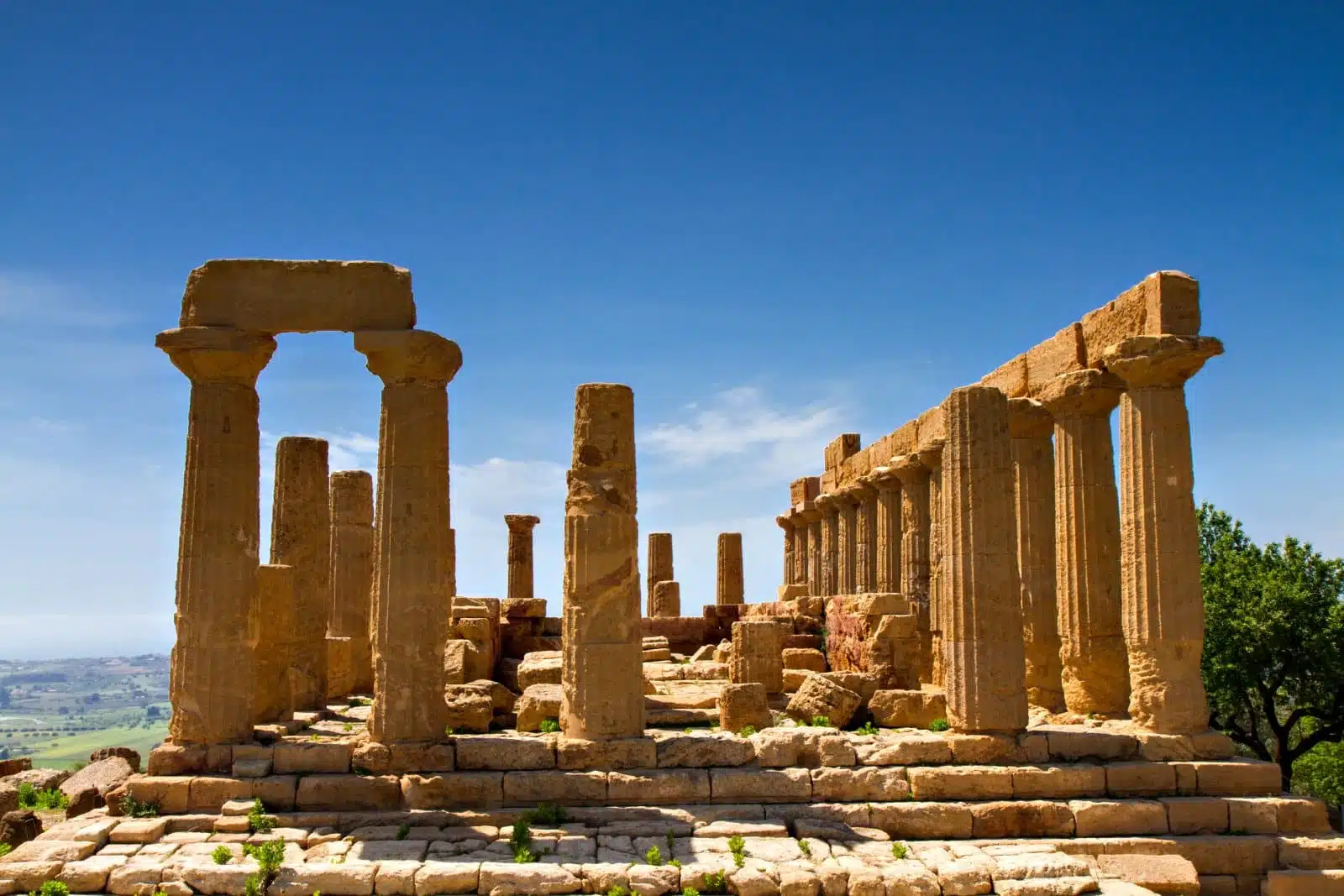
Image Credit: Shutterstock / Circumnavigation
The Valley of the Temples in Agrigento, Sicily, is one of the most significant archaeological sites in the world, offering a rare glimpse into Ancient Greek civilization in Italy. This UNESCO World Heritage site features the ruins of seven Doric temples, including the remarkably well-preserved Temple of Concordia. These ancient structures, set against the backdrop of the Sicilian countryside, provide a tangible connection to the Greeks’ architectural genius and cultural and religious practices.
Insider’s Tip
Visit the site at sunset when the setting sun illuminates the temples in a golden light, creating a magical atmosphere.
When to Travel
Spring (April to June) and fall (September to October) are the best times to visit, avoiding the intense heat of the Sicilian summer.
How to Get There
Agrigento can be reached by train or bus from Palermo or Catania. The Valley of the Temples is located just outside the city and can be accessed by local bus or taxi.
9. The Renaissance Gardens of Florence
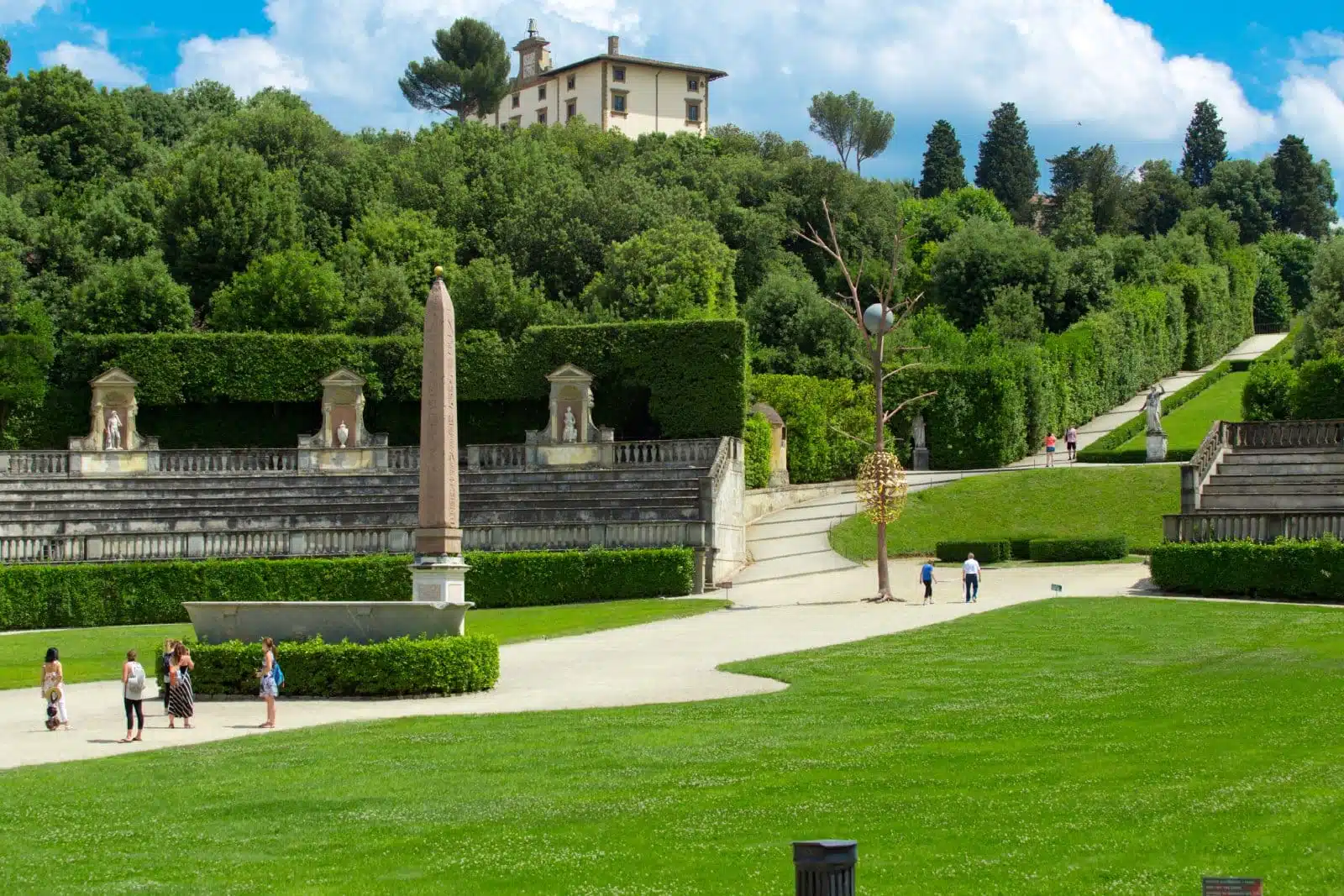
Image Credit: Shutterstock / Alexey Medvednikov
Florence, the cradle of the Renaissance, is renowned for its art and architecture, but its gardens equally deserve admiration. Behind the Pitti Palace, the Boboli Gardens are a prime example. They were designed in the 16th century as an open-air museum featuring sculptures, fountains, and grottoes amidst meticulously landscaped lawns and hedges. These gardens reflect the Renaissance ideals of beauty and harmony and influenced the development of European landscape design.
Insider’s Tip
Explore the lesser-known corners of the Boboli Gardens to discover hidden sculptures and fountains that many visitors overlook.
When to Travel
Late spring and early summer, when the gardens are in full bloom, offer the most beautiful setting for a visit.
How to Get There
Florence is well-connected by train to Italy’s major cities. The Boboli Gardens are within walking distance from the city center.
10. The Street Art of Naples
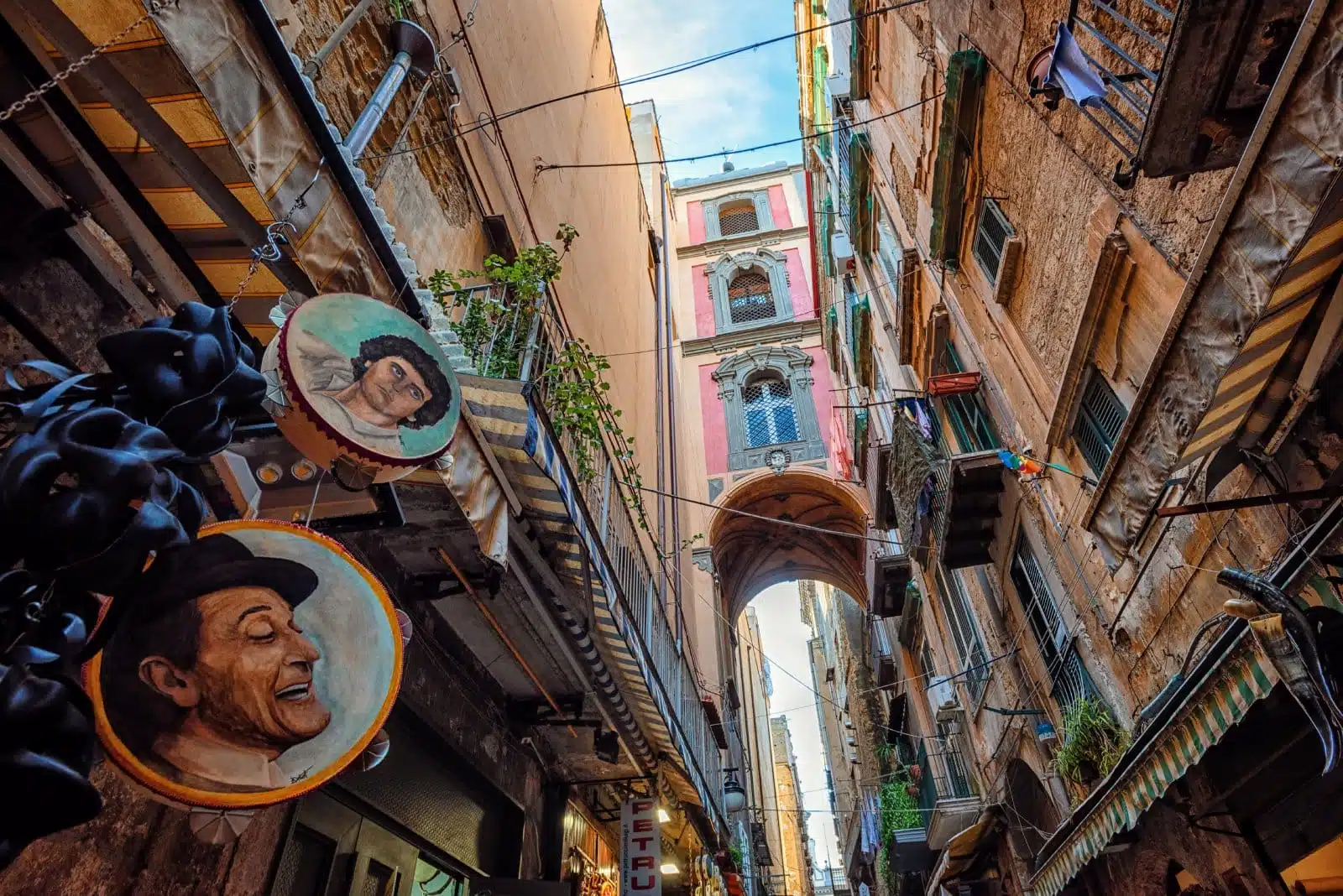
Image Credit: Shutterstock / Boris Stroujko
Naples, a city with a rich historical and cultural heritage, has emerged as a vibrant center for street art in Italy. Artists from around the world have left their mark on the city’s walls, transforming urban spaces into a dynamic open-air gallery. The Quartieri Spagnoli and the area around Piazza Bellini are hotspots for street art, featuring works ranging from large-scale murals to intricate stencils reflecting various styles and themes.
Insider’s Tip
Join a street art tour to learn about the artists behind the works and the stories they tell about Naples and its inhabitants.
When to Travel
Naples is a year-round destination, but the mild spring and fall temperatures make these seasons ideal for exploring the city’s outdoor art.
How to Get There
Naples is easily accessible by train from Rome and other major Italian cities. The city’s street art can be explored on foot or by using public transportation.
The Bottom Line
Italy’s art scene extends far beyond the Renaissance, offering diverse destinations for art lovers to explore. Each site provides a unique insight into the country’s artistic legacy from ancient ruins to contemporary galleries. Whether you’re marveling at Byzantine mosaics, wandering through Baroque cities, or discovering cutting-edge street art, Italy offers endless opportunities to immerse yourself in art. Plan your journey, embrace the insider tips, and prepare to be captivated by the beauty and depth of Italy’s lesser-known artistic treasures.
More From The Green Voyage
12 Best Practices for Sustainable Travel in 2024 – How to Travel With Minimal Environmental Impact
Unlocking Hotel Perks – A Traveler’s Guide to Maximizing Hotel Reward Programs for Optimal Benefits
Travel Hacks for Frequent Flyers – 6 Tips and Tricks to Make the Best of Air Travel
The post The Art Lover’s Guide to Italy 2024 – Beyond the Renaissance first appeared on The Green Voyage.
Featured Image Credit: Shutterstock / Igor Link.
Tips for Trip Success
Book Your Flight
Find an inexpensive flight by using Kayak, a favorite of ours because it regularly returns less expensive flight options from a variety of airlines.
Book Your Hotel or Special Accommodation
We are big fans of Booking.com. We like their review system and photos. If we want to see more reviews and additional booking options, we go to Expedia.
You Need Travel Insurance!
Good travel insurance means having total peace of mind. Travel insurance protects you when your medical insurance often will not and better than what you get from your credit card. It will provide comprehensive coverage should you need medical treatment or return to the United States, compensation for trip interruption, baggage loss, and other situations.Find the Perfect Insurance Plan for Your Trip
